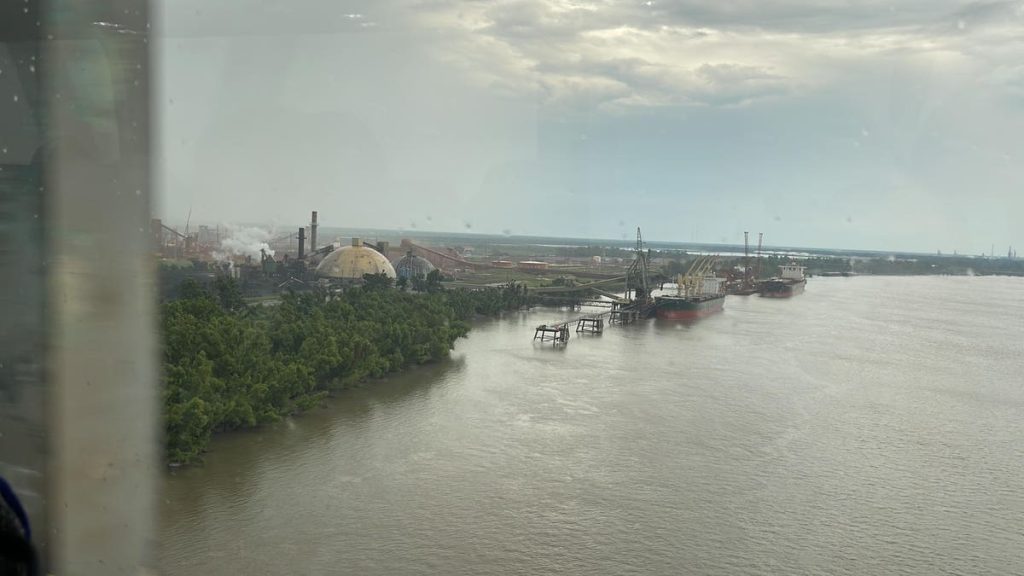After close to a week of reading about the potential drinking water crisis in Louisiana, the public has many questions. Louisiana is my home state and I still have loved ones living in the area in crisis. Note, many of the photos in this story are ones we took. We too are worried about how to keep them safe. We also want to know more about what is happening. Earlier, I wrote about how to be safe.
Now the goal is to help people in Louisiana and other places understand what saltwater intrusion is and what causes it. Saltwater intrusion is the movement of salt water into freshwater aquifers. It can occur naturally, but it is often exacerbated by human activities such as groundwater pumping, coastal development and heavy industry near waterways. Saltwater intrusion can have a number of negative impacts. Those include: contamination of drinking water supplies, damage to agriculture and fisheries, loss of wetlands and other ecosystems as well as increased erosion and flooding.
The reason saltwater intrusion is so acute in Louisiana is because the state is at high risk due to a number of factors. It sits on the Gulf of Mexico and has a low elevation. Some parts of Louisiana are below sea level. It has an extensive network of canals and other artificial waterways. Louisiana is home to a number of water intensive industries, like refining, and has a high rate of groundwater pumping. There is an extensive presence of infrastructure that exacerbates erosion and wetland degradation. The presence of all these hazards, along with environmental justice problems have collided to create a number of risks to drinking water systems.
So how can we prevent or mitigate against saltwater intrusion? States and municipalities can: reduce groundwater pumping, recharge aquifers with freshwater, or do what happens in many places, which is build barriers to prevent saltwater from entering freshwater supplies. Rethinking or changing coastal development practices can also hedge against saltwater intrusion.
Saltwater intrusion is a serious problem that can have a significant impact on human health, the environment, and the economy. This is a global resource issue that reaches beyond any one of the United States.
Saltwater intrusion is a global problem that affects coastal communities around the world. It is a factor in the climate risk assessment in places like the Mekong Delta in Vietnam and the atoll of Tuvalu. The United States happens to be one of the most affected countries, with saltwater intrusion occurring in over 40 states. The cost of saltwater intrusion in the United States is estimated to be billions of dollars each year. One study suggested the economic losses associated with saltwater intrusions in just the states of Maryland, Virginia and Delaware to be in the $100 million per year range.
If you live in a coastal area, it is important to be aware of the risks of saltwater intrusion. More importantly, learning about the overall policies and planning around saltwater intrusion is critical to not just protecting your own property but understanding the context behind some of the crises the country and global community faces.
Read the full article here










